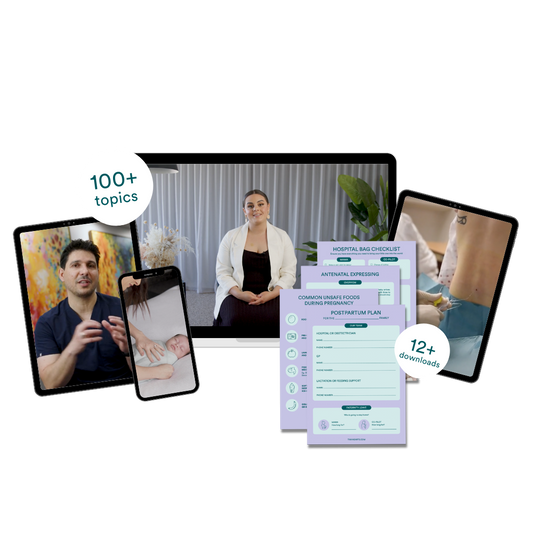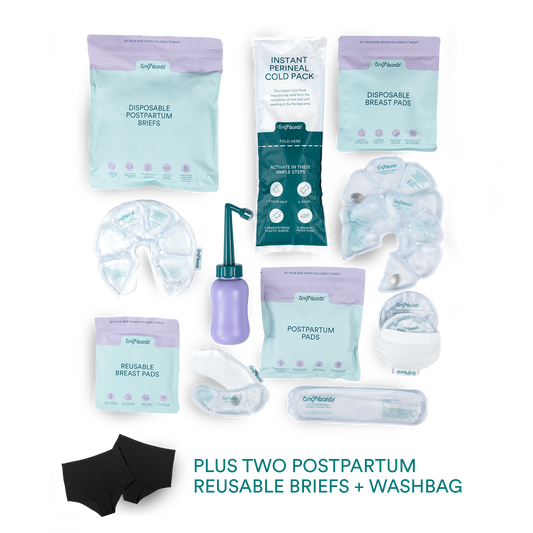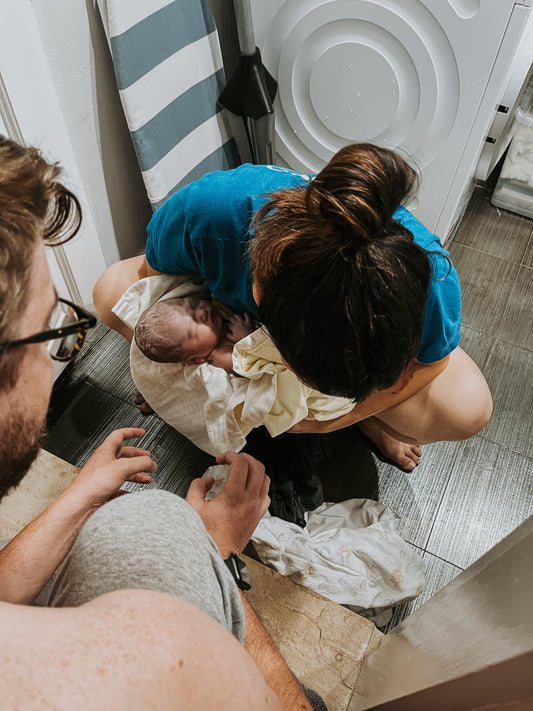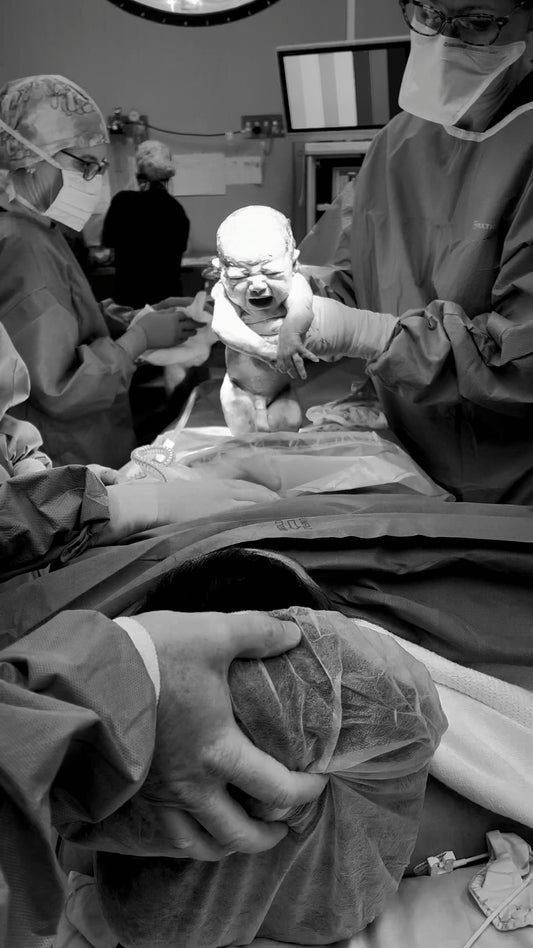Choking is silent. You could be standing on the opposite side of the room with your back turned, and your bub could be choking. Unless they thrash about or somehow get your attention, you might not even notice.
To keep Nahla, Wolf & Bambi safe, when I introduced food, a set of rules came with it. They're not just rules for my babies, but also for Chris and I, or anyone looking after them too. It doesn't matter where we are; at home, at Grandma's house, at the park. If there's food, then the rules apply. It's not to be controlling or minimise mess [although that is a bonus]; it's to keep my babies safe when they're eating because prevention is always better than reaction.
These are our rules around food to keep Nahla, Wolfie & Bambi safe:
No food in the car.
Instead, I offer the kids food to eat before we leave and, again, after we arrive. That's because if I'm driving down the highway and one of them chokes, I can't stop quickly to deliver life-saving back blows and chest thrusts. To be honest, I may be so focused on the road that I might not even notice, particularly because Wolfie is still rear-facing. You also have to consider that there's not always somewhere safe to pull over. The last thing you want to be doing is travelling at 100km/h while frantically looking for places to pull over because your child is choking in the back. In these situations, seconds count. They might complain that they're hungry, and if it's a long trip, you might consider pulling over for a rest stop. But if it's a short journey, as tempting as it is, keep the food for once you get there and can actively supervise your bub.

We sit at the table when we eat.
Did you know that if your bub is up and moving around or lying down/ reclined while eating, they are more likely to choke? Having your bub sit at the table means that they're seated upright, which is the safest position for bub to be in when eating. Sitting at the table when eating also means that you can closely supervise them at all times because they're not jumping on a trampoline or eating somewhere out of sight while playing hide and seek. This routine is so ingrained in my little ones that as soon as I say 'dinner is ready', they immediately go to the table and wait for Chris or I to bring it over. They also know that when they get up, it means that they're finished, and their plates go onto the kitchen bench. If they want more, then it's back to the table. If we're somewhere without a table, such as at a park, we modify the rule to sitting together on our bottoms. If you get up, it means you're finished eating, but if you come back from playing and want more, then we sit back on our bottoms together to eat.
If you implement this rule from the start, your bub won't know any different, and it becomes a normal part of eating. But I can appreciate that it might be tricky to implement with a cheeky toddler if you haven't done this from the start, so my tips are:
- Sit at the table with them to eat
- Model eating at the table for them to see
- Hype up sitting at the table - make it exciting
- Talk to them about why we need to sit at the table - they're smarter than we give them credit for
- Be really clear that when they get up, the food goes up until they're sitting at the table again
- Perseverance and a lot of patience - they will eventually understand
- Remember why you're doing it [to keep them safe]
When the babies are sitting to eat, one of us is sitting with them, distraction-free.
In a complete obstruction, no air can get into the lungs, and no air can get out. Because no air can escape, you can't cough. You can't scream. You can't yell for help. You can't cry. Choking is completely silent. That's why you need to be actively supervising, watching your little one constantly and paying close attention incase they do choke.
When our bubs are at the table eating, either Chris or I are sitting at the table with them. While it's not always 100% possible, we always try to have the TV off, phones down and be distraction-free to make sure our focus is on them. It's also a nice time to chat to them about how their day went or something else that's going on, and once you get used to it, it becomes refreshing to have set times each day with your bubs without distractions.
Safe foods only.
If you've been around for a while, then you'd know there are well known choking hazards, particularly for kids under five. Some of the common ones are:
- Marshmallows. These sticky treats are a huge choking risk, which is tricky because they're often served with babycinos. Your average marshmallow's size is very similar to that of a little one's [aged 0-3] airway. If swallowed whole, the marshmallow could become easily lodged in the front resulting in a complete obstruction and a choking emergency. When mixed with saliva, the marshmallow's consistency changes from soft and spongy to sticky - which can be challenging for children to swallow properly. This texture also prevents back blows from being effective if a marshmallow was to become lodged a child's throat. Rip into quarters, and avoid until at least age 3.
- Popcorn. Popcorn is a big choking risk, but also poses a risk for aspiration [being breathed into the lungs]. Avoid until at least 3.
- Doritos and corn chips.
- Grapes + cherry tomatoes. Grapes are the perfect size to block an airway. Chop them into quarters longways, or halve for older kids.
- Nuts. Did you know that little ones can choke on even half a nut? Instead, grind them down or use a thin slice of nut paste like peanut butter, and avoid whole nuts until at least 5.
- Unchopped sausages + hotdogs, or chopped into coin-like shapes which easily block an airway. Instead, try long, thin slices.
- Chunks of meat. Cook, freeze, and grate into small pieces, or chop well.
- Chunks of watermelon. Again, chop into long thin slices.
- Large blueberries. Halve or quarter for extra-large ones.
- Chewing gum, lollipops + gumballs.
- Raw carrot + apple. Peel + grate, steam, blend or chop well.
- Tiny teddies.
- M&Ms. They're not easily chewable, especially for bubs with no teeth. Avoid or crush well. Avoid M&Ms with peanuts in them until at least 5.
If Chris and I are eating choking hazards, and Nahla or Wolfie ask for some, we have a strategy: Chop it, swap it or stop it.
Get the FREE "preparing foods to reduce the risk of choking" downloadable HERE.
Modify by crushing, blending, steaming, chopping or grating the food item to make it safe for them to eat. This might work for things like raw apple and carrot, meat chunks, sausages, blueberries and cherry tomatoes. Roll slippery foods like avocado in breadcrumbs to add grip - mango rolled in desiccated coconut also works a treat!
If the food item can't be modified into a safe and developmentally appropriate form, substitute it for something similar. For example:
- Swapping popcorn for baby corn puffs
- Swapping peanut for a thin layer of peanut butter on something
- Swapping large squares of chocolate for chocolate custard.
If the food can't be modified, and you can't find an appropriate substitute, distract them with something else and delay introducing the food to them until they are older and developmentally more capable of chewing and swallowing.
At the end of the day, accidents can and do happen. Sometimes no matter how prepared you are, how much research you've done, how much you've modified foods, how many prevention strategies you've implemented, your bub may still choke. At that moment, you need to know the correct treatment. Here's a quick little run down on what to do if your bub has a complete obstruction for those who have done our course and need a little refresher:
5 to stay alive.
5 back blows, followed by 5 chest thrusts.
Then repeat over and over and over until your bub clears their obstruction, the ambulance arrives and takes over, or they become unconscious. If your bub has a severe obstruction and it is not cleared, at one point, they will go unconscious, and you will need to start CPR immediately until the ambulance arrives and takes over.
Choking is an emergency, and at that moment, you need to be able to step up and save your precious tiny heart. Would you know what to do? Reading this blog isn't enough. I can't teach you the correct back blow and chest thrust technique in a 30-second reel. I can't teach you the differences between a partial and complete obstruction and what to do in each situation on Instagram. So if there's any doubt in your mind, book into our baby first aid course and let us teach you how to be the hero your bub may one day need. The skills we teach you are literally life-saving, and I can't wait for you to join our proactive parent tribe.








